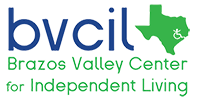The Texas Governor’s Committee on People with Disabilities is reaching out to Texas artists who have disabilities to contribute their artwork in a competition to create this year’s National Disability Employment Awareness Month (NDEAM) poster. The deadline for submissions is Friday, March 15, 2013. For more information, contest guidelines, and submission forms, please visit the NDEAM initiative website at:
http://governor.state.tx.us/disabilities/ndeam/ndeam_poster/
National Disability Employment Awareness Month occurs each October to highlight the importance of diversity in building a strong and creative work force.







